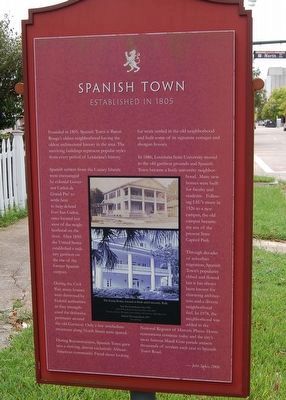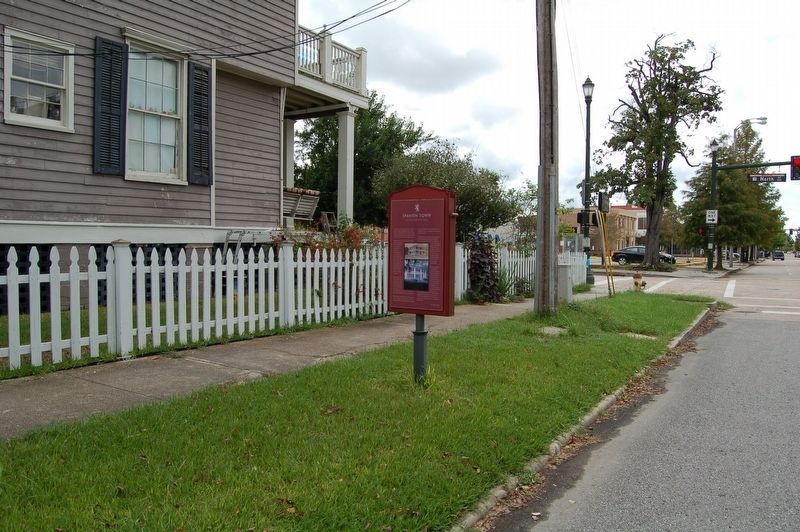Downtown in Baton Rouge in East Baton Rouge Parish, Louisiana — The American South (West South Central)
Spanish Town
Established In 1805
Founded in 1805, Spanish Town is Baton Rouge's oldest neighborhood having the oldest architectural history in the area. The surviving buildings represent popular styles from a period of Louisiana's history.
Spanish settlers from the Canary Islands were encouraged by colonial Governor Carlos de Grand Pre' to settle here to help defend Fort San Carlos, once located just west of the neighborhood on the river. After 1810 the United States established a military garrison on the site of the former Spanish outpost.
During the Civil War, many houses were destroyed by Federal authorities as they strengthened the defensive perimeter around the old Garrison. Only a few antebellum structures along North Street were spared.
During Reconstruction, Spanish Town grew into a thriving, almost exclusively African-American community. Freed slaves looking for work settled in the old neighborhood and built some of its signature cottages and shotgun houses.
In 1886, Louisiana State University moved to the old garrison grounds and Spanish Town became a lively university neighborhood. Many new homes were built for faculty and students. Following LSU's move in 1926 to a new campus, the old campus became the site of the present State Capitol Park.
Through decades of suburban migration, Spanish Town's popularity ebbed and flowed but it has always been known for charming architecture and a diverse neighborhood feel. In 1978, the neighborhood was added to the National Register of Historic Places. Home restorations continue today and the city's most famous Mardi Gras parade attracts thousands of revelers each year to Spanish Town Road.
—John Sykes, 2006
Topics. This historical marker is listed in these topic lists: Architecture • Settlements & Settlers. A significant historical year for this entry is 1805.
Location. 30° 27.17′ N, 91° 11.086′ W. Marker is in Baton Rouge, Louisiana, in East Baton Rouge Parish. It is in Downtown. Marker is on North Sixth Street north of North Street, on the left when traveling south. Touch for map. Marker is in this post office area: Baton Rouge LA 70802, United States of America. Touch for directions.
Other nearby markers. At least 8 other markers are within walking distance of this marker. Piño House (about 500 feet away, measured in a direct line); St. Vincent's Academy/Catholic High School (about 700 feet away); a different marker also named Spanish Town (about 700 feet away); The Former Baptismal Fount (about 700 feet away); Site of the Shiloh Baptist Church (approx. 0.2 miles away); Old Arsenal Museum (approx. 0.2 miles away); St. Joseph Cathedral (approx. 0.2 miles away); LSU Former Campus (approx. 0.2 miles away). Touch for a list and map of all markers in Baton Rouge.
Credits. This page was last revised on February 12, 2023. It was originally submitted on September 19, 2016. This page has been viewed 829 times since then and 36 times this year. Photos: 1, 2. submitted on September 19, 2016. • Bernard Fisher was the editor who published this page.

